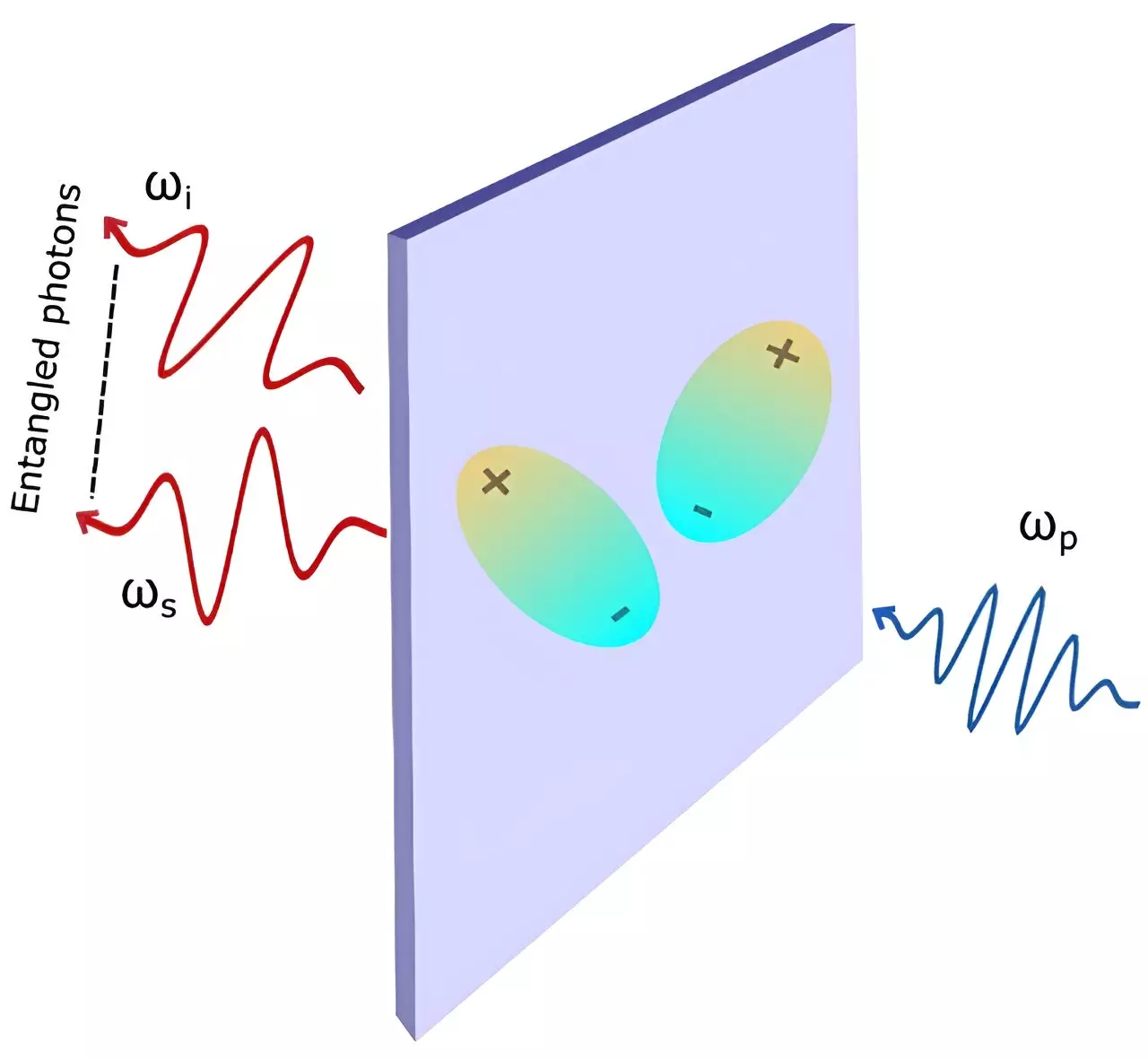Quantum entanglement represents one of the most intriguing phenomena in modern physics, underpinning a range of emerging technologies including quantum communication, computing, and cryptography. At its core, entanglement describes a situation where the properties of two quantum particles become intertwined such that measuring one particle instantaneously influences the state of another, irrespective of the distance separating them. This remarkable feature of quantum systems has spurred extensive research into generating entangled photons—massless particles of light that serve as vital carriers of quantum information.
Traditionally, entangled photons are produced through a non-linear optical process known as spontaneous parametric down-conversion (SPDC). In its basic form, SPDC involves shining light onto non-linear optical crystals, where the input light, or “pump” beam, induces a transformation of photons into pairs of entangled photons. However, as striking as this method is, it comes with intrinsic limitations regarding efficiency that have thus far hindered advancements in practical quantum applications.
Recent research originating from the National University of Singapore (NUS) introduces a promising solution aimed at addressing the inefficiencies commonly associated with SPDC. Led by Associate Professor Su Ying Quek from the Department of Physics, the team explored how excitonic resonances—arising from interactions between positive and negative charge carriers—could substantially improve the generation of entangled photon pairs. The enhanced efficiency of SPDC becomes evident when these excitonic interactions are activated within the non-linear optical crystal during the photon generation process.
The research emphasizes the critical role distance plays in the excitonic interactions. When the opposite charges—known as excitons—are in closer proximity to each other, the probability of successful photon-photon transitions increases significantly. Utilizing advanced fully quantum mechanical calculations, the researchers were able to demonstrate that the efficiency of SPDC is closely linked to the energy or frequency of the pump light, challenging conventional approaches that overlook these vital interactions.
One of the remarkable outcomes of the NUS team’s research is their advocacy for ultrathin crystals as innovative mediums for generating entangled photons. Historically, concerns about the limitations of ultrathin materials have led many researchers to dismiss their potential for SPDC, mainly due to an assumed reduction in efficiency as material volume declines. However, the NUS findings suggest otherwise. The intensified excitonic effects in ultrathin configurations counteract typical efficiency drawbacks, thereby paving the way for their use in practical applications.
According to Prof. Quek, the transition to using ultrathin crystals also offers an essential advantage by overcoming the phase-matching problem—a critical hurdle faced during SPDC in thicker materials. Here, the interaction between light and the medium dictates how effectively the generated photon pairs can be correlated. Utilizing ultrathin crystals could represent a transformative shift in optical design, turning a perceived disadvantage into a groundbreaking opportunity for advancing quantum technologies.
In exploring these novel insights, the research team applied their theoretical framework to real-world scenarios, specifically studying the layered non-linear optical material NbOI2. Their model successfully predicted the outcomes of various optical processes, including SPDC and its inverse, second harmonic generation (SHG). Furthermore, their simulations aligned closely with existing experimental results, validating their theoretical assertions.
The research also indicated that the excitonic enhancement becomes especially pronounced when the frequency of the pump beam aligns closely with the crystal’s excitation frequency, particularly when generating entangled pairs. This distinctive condition suggests practical pathways to configure ultrathin optical materials into sophisticated quantum-photonic platforms.
The future of quantum communication and information technology is inextricably linked to advancements in photon generation methods. With breakthroughs like those achieved at NUS, the prospect of more efficient, integrable, and scalable entangled photon sources appears promising. As researchers pursue these innovations, we may soon see the emergence of next-generation devices that encapsulate the full potential of quantum entanglement—shaping the landscape of technological advancements for years to come.

